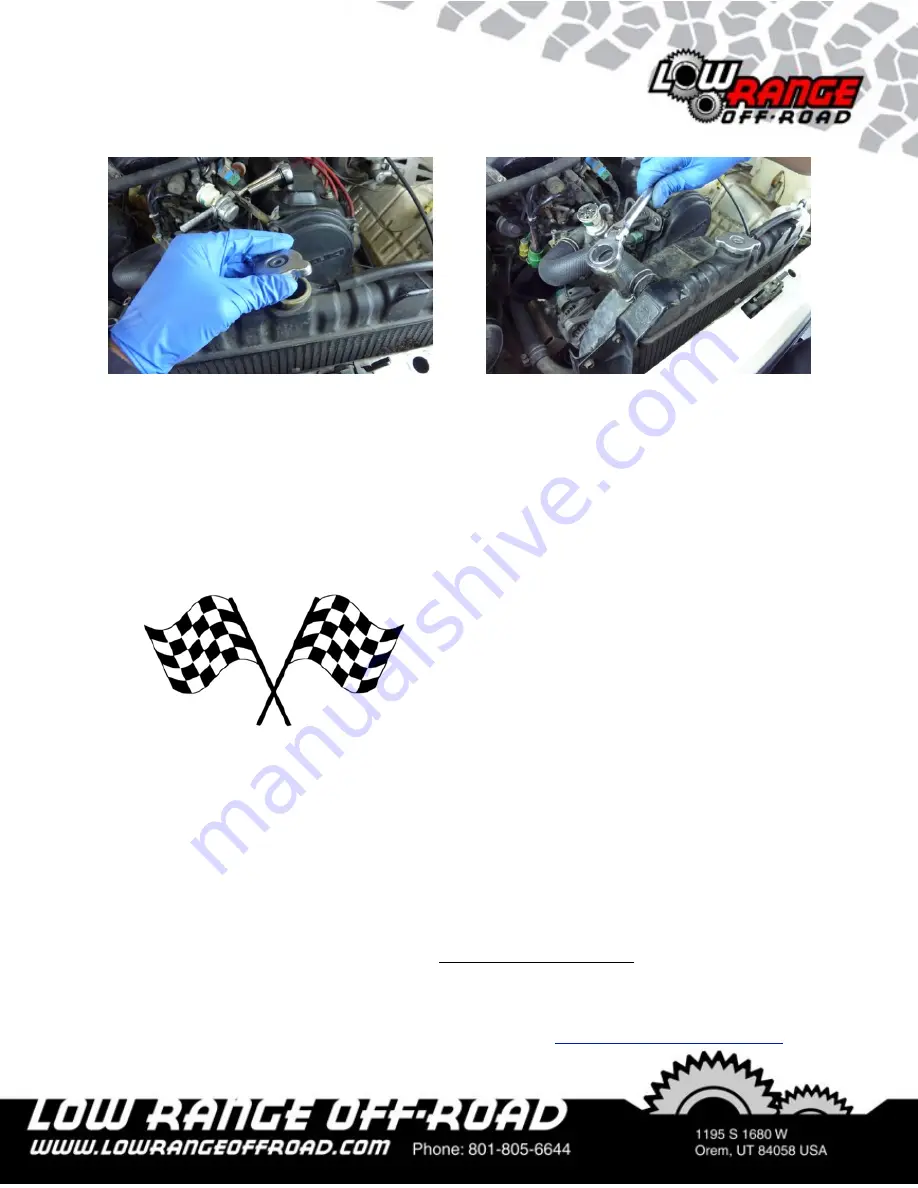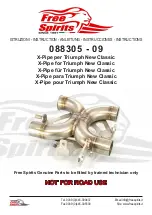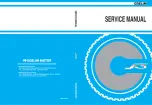
Step 43
When the coolant level remains
constant, without dropping, install the
cap.
Step 44
Leave the engine running and check all
the hose connections for leaks. If leaks
are observed, turn the engine off and
repair as needed. Small hose leaks can
often be remedied by snugging the
clamps.
Warning:
If hoses have to be removed
to make needed repairs, be sure to let
the engine (and coolant) cool down
(usually 30 to 45 minutes) before
removing the cap or hoses.
Congratulations!!!
Once the radiator and overflow bottle is full and you are sure there are no leaks . . . you
are done. Congratulations!!!!
One more thing. It is almost impossible to get all the air out of the system in the
procedure outlined above. So after several warm-up and cool-down cycles, check the
overflow bottle (NOT THE RADIATOR) and add coolant if needed. This can be done
with the engine hot. There should be no need to have to check the radiator as it is kept
full by the overflow bottle. However, if you think the radiator could be low, it is okay to
check and add coolant if needed. Just be sure the engine is cool when you remove the
radiator cap to check coolant level at the radiator.
We hope these instructions have been helpful. If you have suggestions on how we can
improve our instructions (or products) please email us at


































